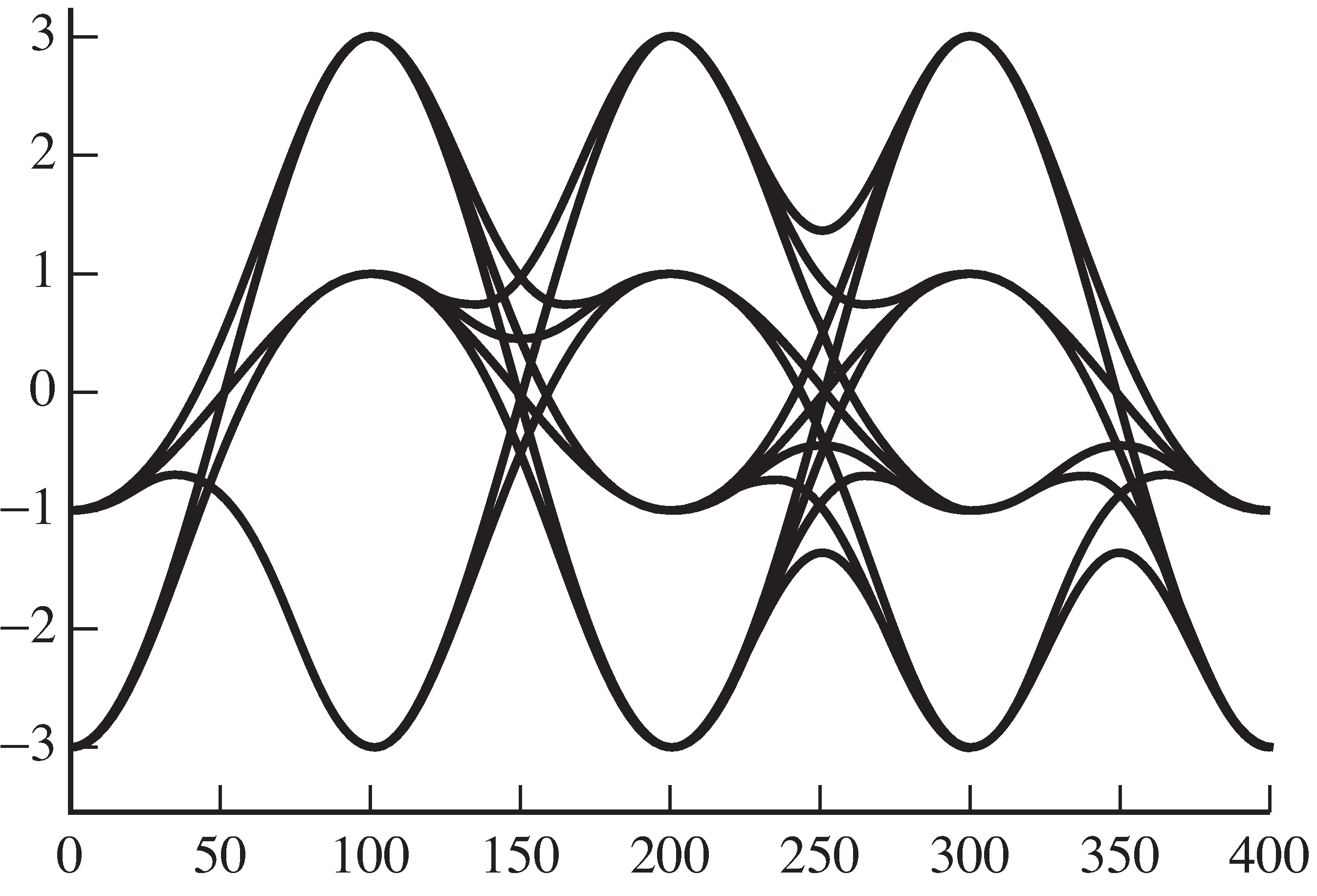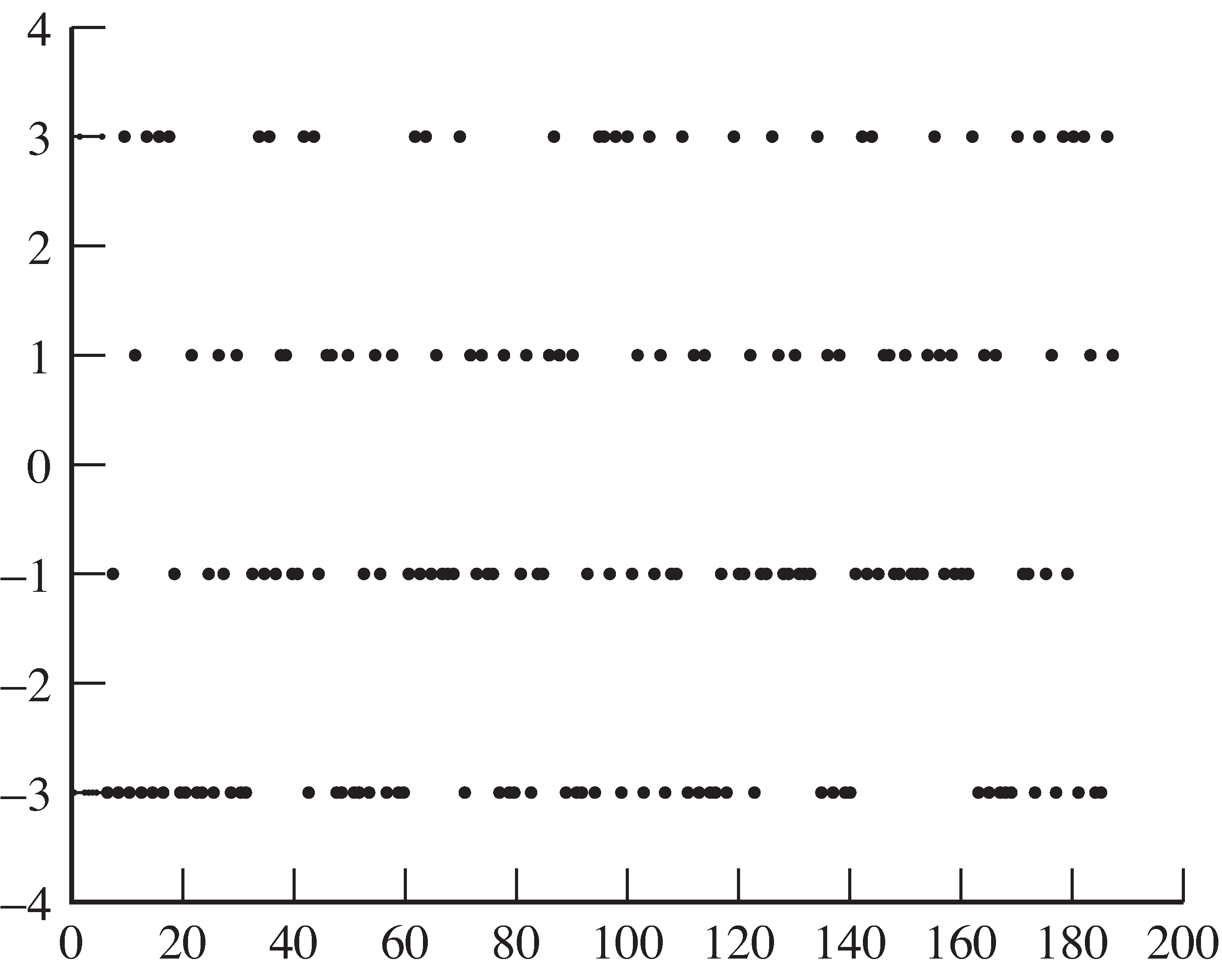| << Chapter < Page | Chapter >> Page > |

Four is an interesting grouping size for this particular problem
because four symbols are used to represent each characterin the coding and decoding implemented in
letters2pam.m and
pam2letters.m .
One idiosyncrasy is that each character starts offwith a negative symbol. Another is that the second
symbol in each character is never
in our chosen message.
These are not generic effects; they are a consequence of theparticular coding and message used in
idsys.m .
Had we chosen to implement a scrambling scheme(recall Exercise
[link] )
the received signal would be whitened andthese particular peculiarities would not occur.
The vector
z contains estimates of the decoded symbols, and
the command
plot([1:length(z)],z,'.') produces
a time history of the output of the downsampler, as shown in
[link] . This is called the time
history of a
constellation
diagram in which all the dots are meant to lie near
the allowable symbol values. Indeed,the points in
[link] cluster tightly about
the alphabet values
and
.
How tightly they cluster can be quantified using the
cluster variance , which is the average of the square of
the difference betweenthe decoded symbol values (the
soft decisions) in
z and the nearest member of the alphabet (the final
hard decisions).
The M
atlab function
quantalph.m is used in
idsys.m to calculate the hard decisions, which
are then converted back into a text character string using
pam2letters.m . If all goes well, this
reproduces the original message.The only flaw is that the last symbol of the message
has been lost due to the inherent delay of thelowpass filtering and the pulse shape correlation.
Because four symbols are needed to decode a single character,the loss of the last symbol also results in the loss of the
last character. The function
pam2letters.m provides a friendly reminder in the M
atlab command
window that this has happened.

The problems that follow give a few more ways to explore the behavior of the ideal system.
Using
idsys.m , examine the effect of using different
carrier frequencies. Try
fc= 50, 30, 3, 1, 0.5.
What are the limiting factors that cause some towork and others to fail?
Using
idsys.m , examine the effect of using different
oversampling frequencies. Try
M= 1000, 25, 10.
What are the limiting factors that cause some towork and others to fail?
What happens if the LPF at the beginning of the receiver is
removed? What do you think will happen if there areother users present? Try adding in “another user”
at
fc = 30 .
What are the limits to the LPF design at the beginning of the receiver? What is the lowest cutoff frequency that works? The highest?
Using the same specifications (
fbe=[0 0.1 0.2 1]; damps= [1 10 0 ]; ), how short can you make the LPF? Explain.
Unfortunately, a number of the assumptions made in
the simulation of the ideal system
idsys.m are routinely violated in practice.
The designer of a receiver must somehow compensateby improving the receiver.
This section presents an impairment (flat fading) for which we havealready developed a fix (an AGC).
Later sections describe misbehavior due to a wider variety ofcommon impairments that we will spend the rest of the book combating.

Notification Switch
Would you like to follow the 'Software receiver design' conversation and receive update notifications?